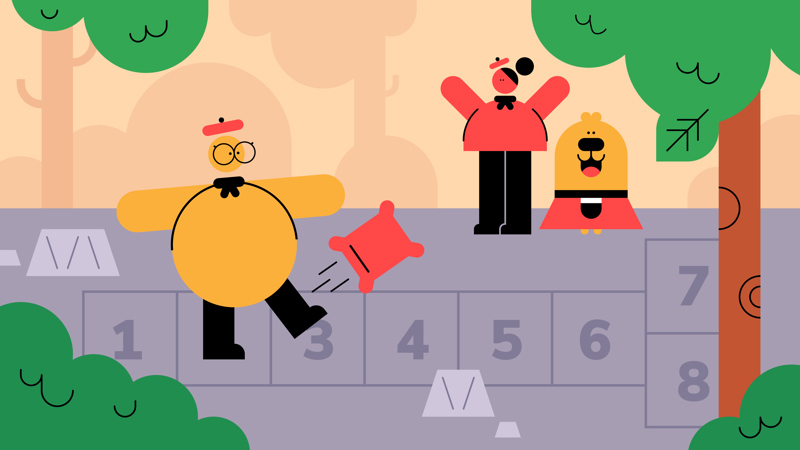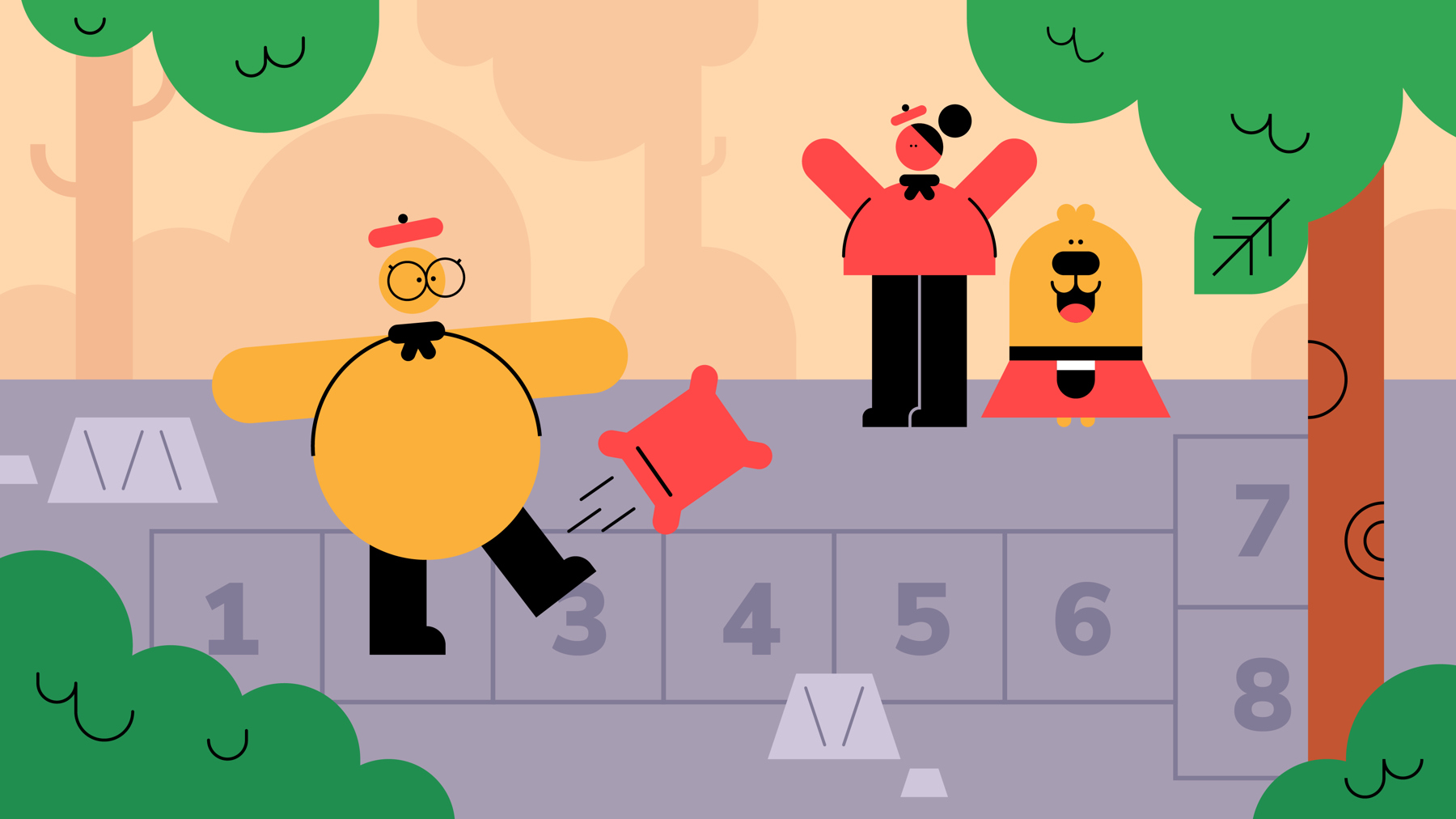
Peever fever
You’ll need
- Something to mark lines (for example, chalk, masking tape, or rope)
- One small bean-bag per person
Before you begin
- Use the safety checklist to help you plan and risk assess your activity. Additional help to carry out your risk assessment, including examples can be found here. Don’t forget to make sure all young people and adults involved in the activity know how to take part safely.
- Make sure you’ll have enough adult helpers. You may need some parents and carers to help if you’re short on helpers.
Setting up the Peevery bed
- The person leading the activity should set out the ‘peevery bed', as shown in the image.
- Use masking tape to mark out the squares and the chalk to number the squares from one to eight. The two squares next to each other at the end of the course should be numbered ‘seven’ on the left and ‘eight’ on the right. Large groups may need more than one course, so that everyone can have a go.

Play the game
- The person leading the activity should ask the group if anyone has ever played ‘Hopscotch’ in the playground before. Explain that ‘Peevers’ is a similar game played in Scotland, which involves hopping from one square to the next, kicking a ‘peever’ along with you.
- Choose someone to help demonstrate the game. That person should place the ‘peever’ (a bean-bag) in the first square. Then they should hop into that square on one foot. Using their other foot, they need to kick the peever to the next square. They then hop to the next square onto their other foot and so on, until they reach the end of the course.
- Make sure that everyone gets the idea and have the group line up to give it a go.
- Everyone should have three lives on their first turn. If anyone touches the floor with the foot they aren’t hopping on for that square, they lose a life. If anyone kicks the peever and it goes anywhere other than the next square, they lose a life. When this happens, return the peever to the square it was in before it was kicked. If anyone runs out of lives, they should go to the back of the line.
- Try to make sure that the game moves quickly. This will make the game more fun and make it easier for everyone to have multiple turns. At the same time, be sure that everyone is wearing the right footwear for this kind of game. Players should take care extra care not to land on the bean-bag with their standing food - not only will this make it impossible to kick it, but they might also slip over.
- Those waiting in line to have their turn should cheer on the person hopping and kicking. They could shout out the numbers they land on as they go or advise on how hard to kick the peever. This might be useful for the last two squares, which are side-by-side and it may be difficult to kick the peever into and out of.
- When a player completes the course, they should pick up their peever and return to the back of the line.
Reflection
The group have played a game of ‘Peevers.’ What did they like most about this game? Will they play this again in the playground with their friends? How hard was it to keep their balance, kick the peever and hop between the squares, without losing all their lives?
‘Peevers’ is very similar to the popular game hopscotch. It is the version of the game preferred in Scotland. Has anyone ever played a familiar game that was slightly different? Those who have played hopscotch - which version do they enjoy most? What do they think a ‘peever’ might be?!
Safety
All activities must be safely managed. You must complete a thorough risk assessment and take appropriate steps to reduce risk. Use the safety checklist to help you plan and risk assess your activity. Always get approval for the activity, and have suitable supervision and an InTouch process.
- Active games
The game area should be free of hazards. Explain the rules of the game clearly and have a clear way to communicate that the game must stop when needed. Take a look at our guidance on running active games safely.
Hopscotch masters and football fanatics might power over the peevery bed with ease! Change the size of the squares to make them more difficult to land in, decrease the number of lives or introduce a time limit to liven things up. Really skillful players could even choose a number at the start and try to kick the peever all the way across the course to that square, before hopping after it. Remember to hop on one foot and then the other!
Make the squares larger, have more lives or decrease the number of squares to make things easier. You could also allow players to choose either of the two side-by-side squares (‘seven’ and ‘eight’) to enter when they reach the end of the course.
Introduce different movements to hopping and kicking for those with impaired mobility.
All Scout activities should be inclusive and accessible.
Different versions of this game are played around the world. In hopscotch, an object like a peever is thrown onto the course and then the person hopping must avoid the square it is in. In France, the course runs in a spiral shape, making it longer and more difficult. Find out more about these games and give them a try too.
See what other playground activities might be played in other countries. Do some research and find out how other versions are played, or change the rules yourselves in some way to show what you know about the culture of the country.
Cheering on the player who is on the course is an important aspect of this game. Encourage young people to do this to help the person hopping and kicking. It can even help speed the game up, so that it is more entertaining.

